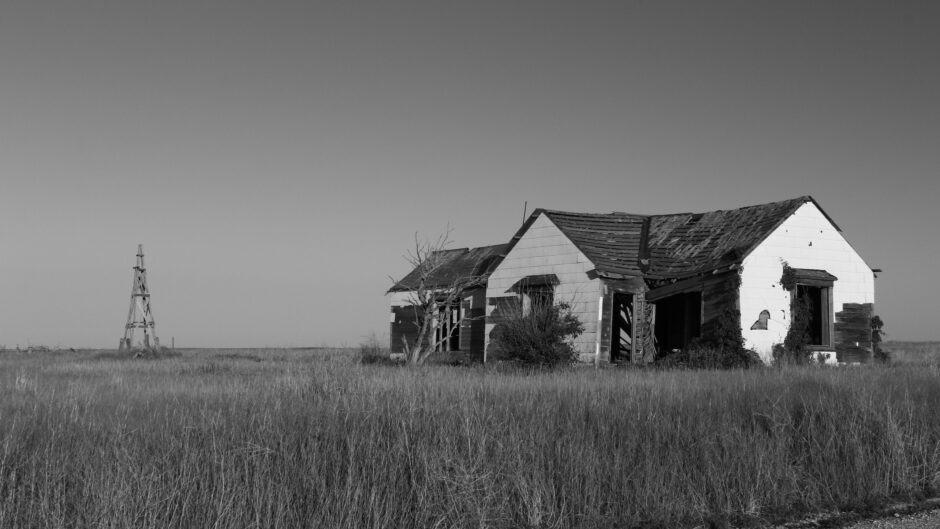I had a moment of revelation and apparently feel the need to share it online. When should we, as homeowners, realize when it’s time to sell our single family houses and move into duplexes, townhomes or apartments due to our age?
We’ve been looking for a house for about a year. We knew we were going to move just short of a year and a half ago and started casually looking then, but knew at the end of March that we could start looking seriously and pull the trigger on anything we fell in love with.
The housing market in general has gone more than a little bonkers since the pandemic hit. Seems that a lot of people wanted to get out of apartments into houses and a lot of potential sellers decided to stay put and wait to sell. Combine this with some historically low interest rates and the conditions for a house feeding frenzy were all set. Houses are being sold before they hit the MLS and a significant amount are being sold for over asking price.
We’ve put in offers on three houses since March. I have continued to say that I will not compromise on what we’re looking for because we plan on this next property being something more long-term for us. The first house went to someone who was paying cash and waived the appraisal. The second, despite me saying continuously that I would not pay over asking (if you want more money, price it higher!), we did actually put in an escalation clause for up to $25K over asking and was outbid by someone paying $50K over (we later found out the deal ended up being a nightmare due to a couple of things, one being the appraisal at that price). The third, our offer was accepted for asking price – more on that later on.
We’ve not looked at a ton of houses because there hasn’t been many on the market that interest us. We have managed to look at four houses that would be classified as significant fixer-uppers, including the house we got the accepted contract on. One of those was bad enough even I thought it should be torn down and I’m usually the last person to suggest that. Another, let’s call it house two, was beautifully designed and solid, but had been neglected for so long that the roof had a couple of big areas of rot, there were actually tarps over these spots and trees were growing all over the wood shingled roof. The actual shingles (the gutters were worse). The third of these was probably livable with a good bucket of disinfectant and maybe some new carpet until we were ready to tear off the roof and make it a two-story cottage, then I saw the foundation showed horizontal cracking (bowing foundation) on three of the four sides which ended that idea. The fourth – our accepted offer – uninhabitable, but seemed to be right at that point where all new floors, kitchen, bathrooms, a couple wall changes, moving a small-ish amount of plumbing and checking electrical could’ve gone a long ways. A potential new roof and a serious amount of exterior vegetation overgrowth removal would’ve done a lot too.
All of these houses were vacant when we viewed them. I don’t know how long house three was vacant, it may have been somewhat recent, but it still appeared to be a few months, not weeks. The others had been vacant for a long time, if they weren’t, then the occupants were living in really squalor-like conditions.
With house two – trees growing on it – there were big spots of mold. If that’s the only place it was (and it was also likely in the roof which would’ve needed to be completely replaced, including probably a couple of roof trusses) then the house could’ve been great. BUT, with mold like that, there was a good chance it had seeped into the wall cavities and heating/air system and may have been prolifically growing out of sight behind drywall. With house four, there were areas where duct tape had been used to “fix” a couple of things, a decent amount of mouse droppings were visible, there were a couple of small spots in the basement where some water had clearly damaged walls and evidence that some items were “repaired” by a diy-er who didn’t know and/or care about doing it right. As previously stated, house one was in really bad shape and tearing it down would’ve been the right choice.
The thing about at least three of the four houses, is that they are all architecturally unique in a good way. One had quirks that were odd, but overall, they are large houses that were well-loved in the 1960s, 70s and probably through until around the 2010s. They were either advertised as estates, or clearly were estates based on sale evidence still in the house. A lot of people will have estate sales while still alive when they move to a smaller place, so it doesn’t mean that someone has passed, but in these instances it certainly appeared that the owner of the house had actually passed and those who had inherited the building were going through the process of selling it. It can take a long time for an estate to get to a point where it can be sold, depending on who, and how many people, inherit it and if those people actually agree and get along. The other thing these houses had in common was the significant amount of refurbishment and repair they all needed. Water was the most significant culprit. A simple missing downspout or clogged gutter can be the reason that a basement wall has to be completely redone. It’s true – an ounce of prevention is worth a pound of cure.
It made me rethink something I had previously felt strongly about. In architectural circles right now, there’s a phrase/movement called “aging in place”. It’s the idea that we can build housing for someone younger, say middle age, and think about their potential needs in twenty or thirty years. For example, one bathroom could be designed in a way that it doesn’t immediately appear to be accessible for someone in a wheelchair, but could be used that way if needed. Some ideas are simple, like placing blocking behind walls where grab bars would go, should they ever need to be installed. The overall thought is that people could stay in their houses longer instead of being forced to move out, perhaps before they are emotionally ready. I always thought that was a good thing, because if you’ve been in a house for twenty or thirty years, you probably have a lower mortgage payment or none at all, and senior housing or even just buying something in a current housing market, may cost an elderly (and likely retired) person more money. And being familiar with surroundings can help ground a person mentally.
House hunting this year has changed that thought for me.
The most environmentally friendly building is an existing one. Established neighborhoods have mature trees and sometimes a community feel. These are good things. Safe housing is an ongoing issue for many people on the planet, not just in the United States. Once a building is complete, proper maintenance and care can keep that building in use for centuries (let’s assume no catastrophic events happen to it). When maintenance is deferred or not done, or done very poorly, the building will quickly deteriorate. In the instances of the houses I’ve mentioned, this means beautiful, well-designed homes are lost. Others may disagree with me, but many new houses are designed (actual design, not construction – although there’s debate on that) very badly. They are drawn by people crunching numbers who clearly lack the ability to think about human activity inside the home. For example, many new spec houses don’t really have a good storage closet for sheets or a broom. The houses we have seen this past year are nicely designed custom ones and, because they are already in existence, could allow future generations to enjoy that custom house at some type of reasonable price compared with what it would cost to build the same thing at today’s market value. If cared for, they can be safe and comfortable houses to live in for a long time. I should emphasize when I say “safe” I’m referring to proper air quality and functioning mechanical, plumbing and electrical systems. Not “safe” in terms of crime, that’s a different discussion.
If someone loses their ability to maintain a house themselves and/or the ability to pay for that maintenance, then it can quickly fall apart. I have found myself a bit angry at the people who stayed a little too long in these houses and allowed them to get to the state they are currently in. My new, current viewpoint is that they effectively removed quality housing from the market for future generations. Also, natural resources will unnecessarily be used up because significant items need to be replaced. For example, on house four, if someone would’ve kept the fascia boards painted, they wouldn’t need replaced due to rot, therefore additional raw lumber would not have be to purchased and consumed.
In the case of house four, our accepted contract, it turns out the inspection revealed a significant pest infestation that didn’t have to happen. Had someone been living continuously in the house and maintaining it, it could have been habitable. The infestation, in our opinion, is so bad that it would now require the removal of all the drywall and insulation on all the walls and ceiling – in short, it would require it to be gutted down to the studs. The owners didn’t have to let it get to that point. We made the difficult decision to terminate the purchase agreement. Beyond the additional scope of work, an infestation isn’t the same as fixing a broken pipe. It’s throughout the entire house and pests bring the additional concern of air quality hazards due to excretions seeping into the structure itself. Had the house been empty but still well maintained by a property manager or caretaker, the pests might not have found their way in. Decent maintenance is the key.
I know that I’m omitting several factors that go into the choices we make about our homes. Some people simply can’t afford to leave a house that’s paid for due to limited income. Some people don’t have another option in their community. Some people have family pressures. Life is messy and choices aren’t always easy or clear. But for the sake of this part of the puzzle, I’m setting those aside and focusing only on if a person has a real choice to stay or move.
I’m more attached to buildings than most people and houses more than other buildings. Houses are homes and are certainly emotional for all of us, in good and bad ways. It can be a difficult process to move from one to another and it can be traumatic. I don’t know how I’ll be decades from now, if I’m lucky enough to grow old in a house. I’ll probably be more stubborn than most when it comes to leaving a house, so I understand the mentality. But I’m glad I came to this realization today that if I leave a house while it’s still in good condition, I have at least fulfilled my part of the bargain in helping maintain good housing stock for my community and not let one deteriorate on my watch.
I’m all for aging in place as long as it makes sense for several reasons. But today I’m of the belief that staying in a house I can no longer properly maintain isn’t just going to hurt me but it will hurt the community I chose to be a part of because I’m contributing to the problem of run-down properties. I’m glad I’ve had this change of view now so I can plan better for my future – again if I’m lucky enough to grow old and have the choice of where to live. Houses take a lot of money and resources to build once. It’s a shame to have to rebuild a significant portion of them again only because someone failed to care for the initial investment properly.
(COVER PHOTO BY UNEXPECTED BLUEPRINT)



